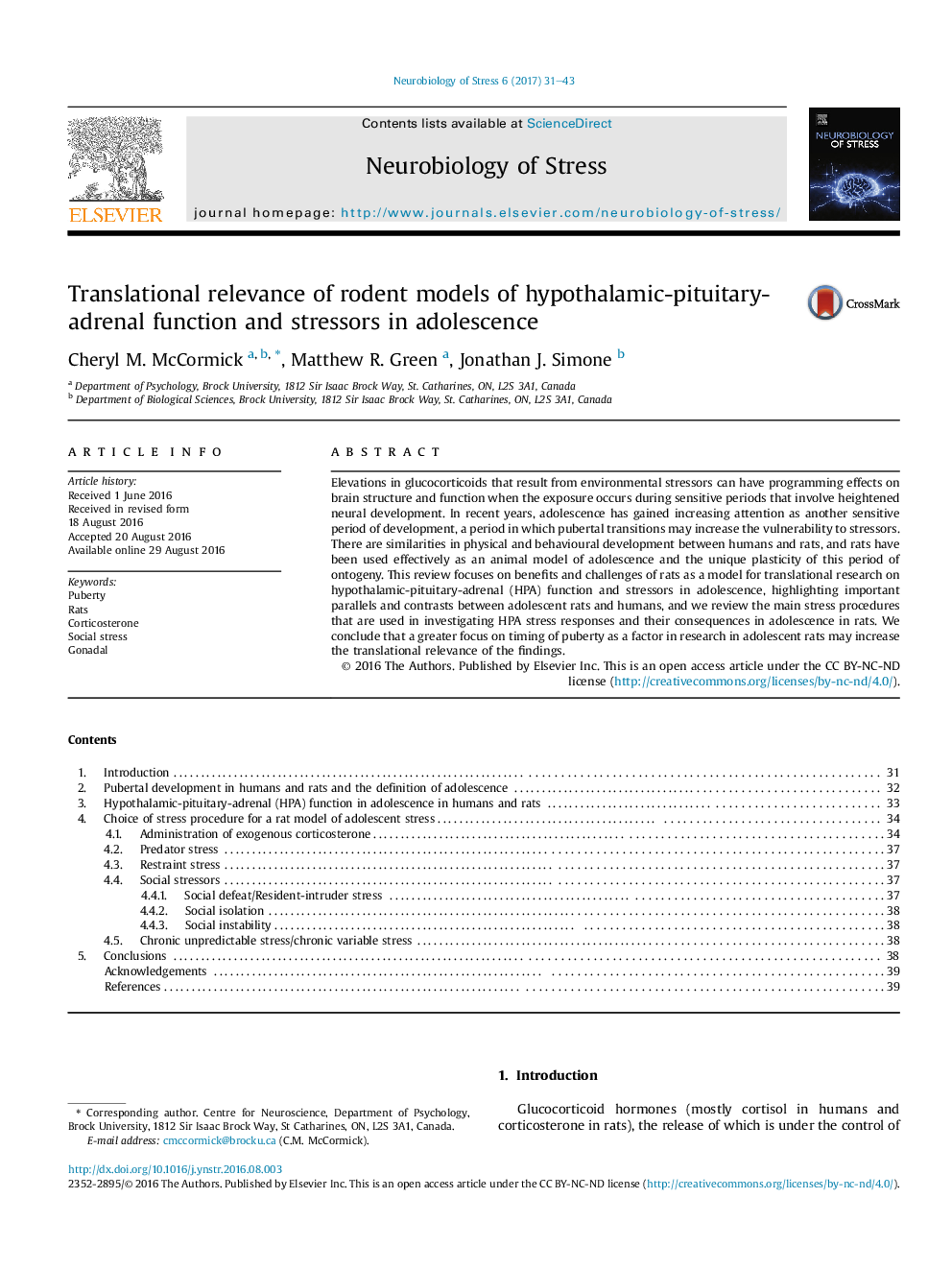| Article ID | Journal | Published Year | Pages | File Type |
|---|---|---|---|---|
| 5736181 | Neurobiology of Stress | 2017 | 13 Pages |
Elevations in glucocorticoids that result from environmental stressors can have programming effects on brain structure and function when the exposure occurs during sensitive periods that involve heightened neural development. In recent years, adolescence has gained increasing attention as another sensitive period of development, a period in which pubertal transitions may increase the vulnerability to stressors. There are similarities in physical and behavioural development between humans and rats, and rats have been used effectively as an animal model of adolescence and the unique plasticity of this period of ontogeny. This review focuses on benefits and challenges of rats as a model for translational research on hypothalamic-pituitary-adrenal (HPA) function and stressors in adolescence, highlighting important parallels and contrasts between adolescent rats and humans, and we review the main stress procedures that are used in investigating HPA stress responses and their consequences in adolescence in rats. We conclude that a greater focus on timing of puberty as a factor in research in adolescent rats may increase the translational relevance of the findings.
